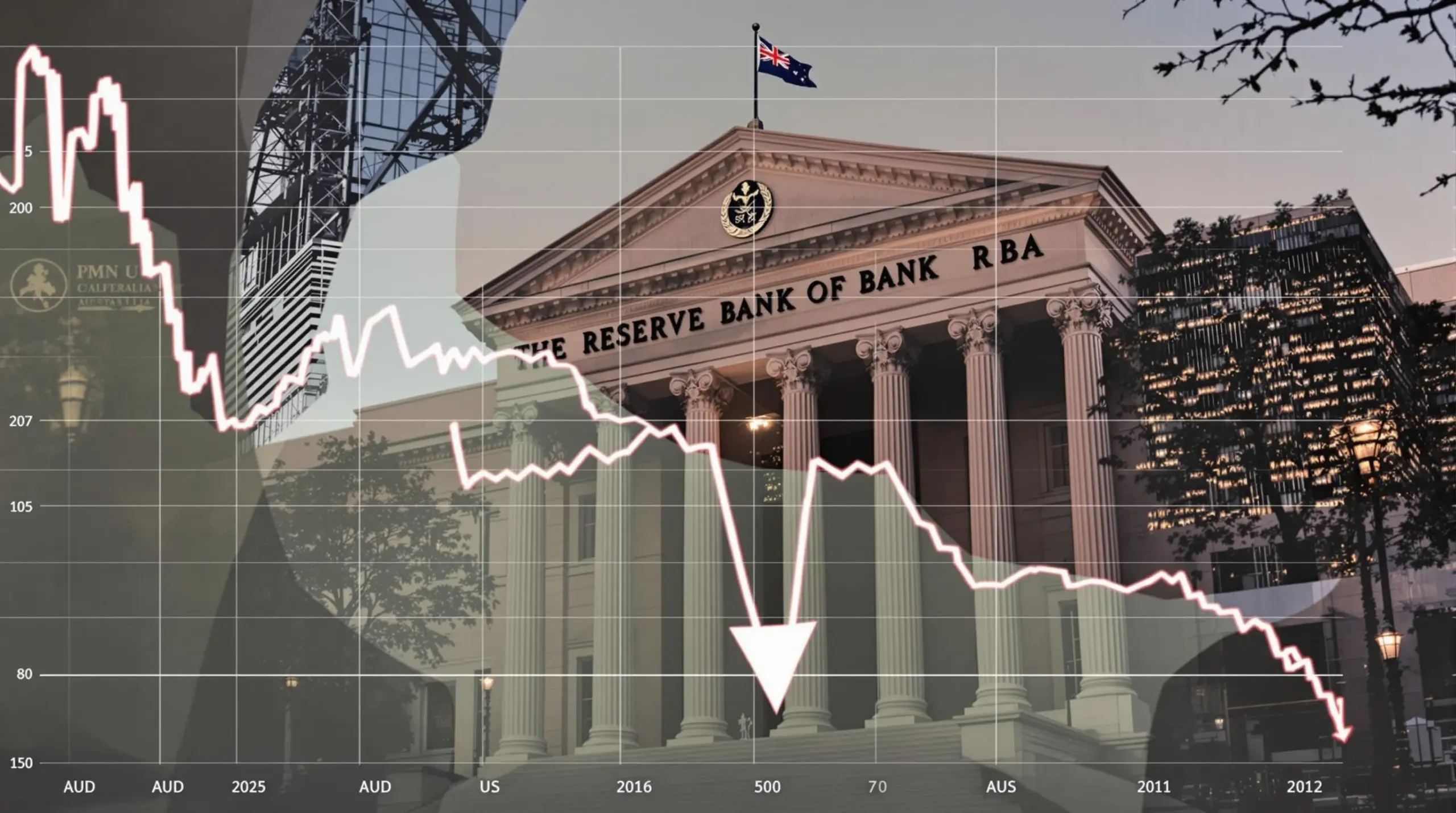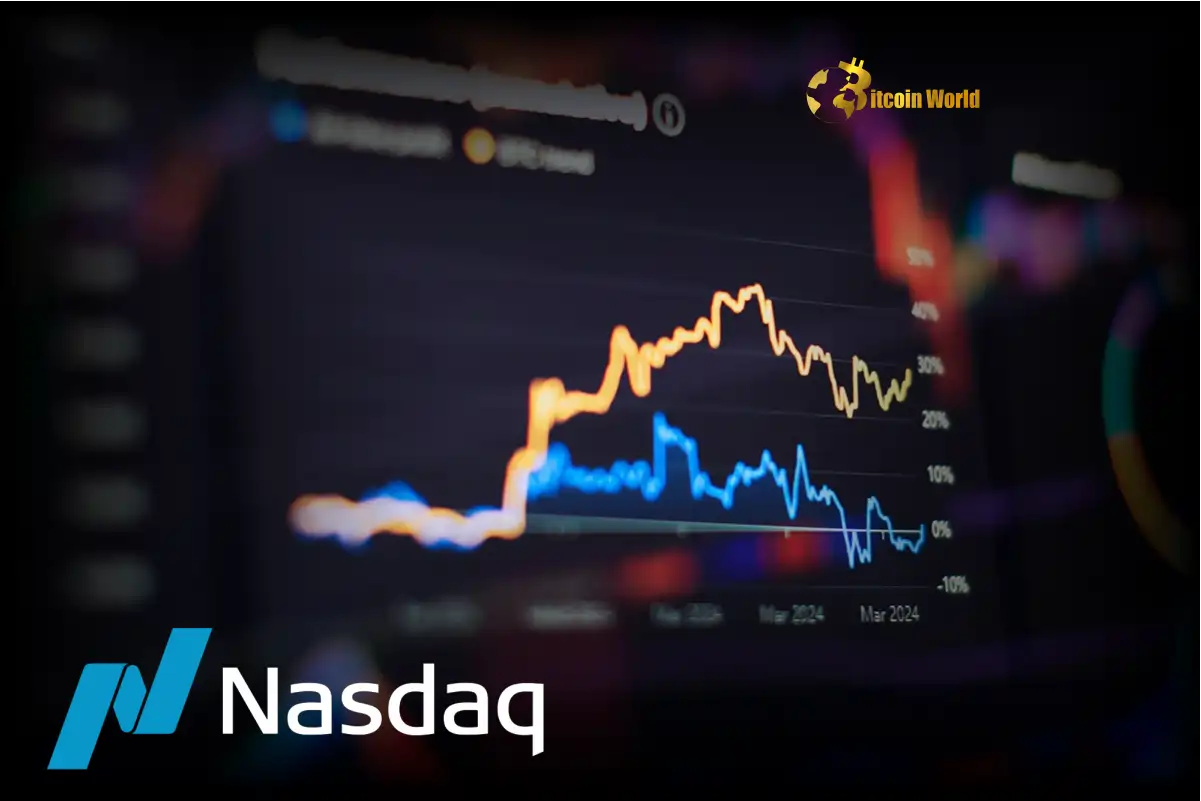BitcoinWorld

RBA Rate Cuts: Crucial Implications as Australian Dollar Dips Below 0.65
In the ever-evolving world of finance, macro-economic shifts in traditional markets often send ripples across the nascent cryptocurrency landscape. While your digital assets might seem far removed from central bank decisions, understanding the intricate dance between interest rates, currency valuations, and global economic sentiment is crucial. Recently, a significant development from UBS has caught the attention of market watchers: their forecast for impending RBA rate cuts as the Australian dollar forecast dips below the critical 0.65 mark. This isn’t just about the Aussie dollar; it’s about a broader economic outlook that could influence investor behavior worldwide, potentially impacting liquidity and risk appetite even in crypto markets.
RBA Rate Cuts: The Looming Reality
The Reserve Bank of Australia (RBA) is at the heart of Australia’s monetary policy, tasked with maintaining price stability, full employment, and the economic prosperity and welfare of the Australian people. When a major financial institution like UBS signals an expectation of RBA rate cuts, it suggests a significant shift in the economic winds. But what exactly are interest rate cuts, and why would the RBA consider them?
Interest rate cuts are a tool used by central banks to stimulate economic activity. By lowering the official cash rate, the RBA aims to:
- Reduce Borrowing Costs: This makes it cheaper for businesses to invest and expand, and for consumers to take out loans for homes or other purchases.
- Boost Spending: Lower interest rates can encourage spending over saving, injecting more money into the economy.
- Weaken the Currency: A lower interest rate can make a country’s currency less attractive to foreign investors, potentially leading to depreciation, which can boost exports.
UBS’s projection for RBA rate cuts is likely predicated on a weakening economic outlook for Australia. This could include factors such as softer consumer spending, a slowdown in the global economy impacting Australia’s export markets, or inflation consistently falling below the RBA’s target range. Such conditions typically prompt central banks to ease monetary policy to prevent a more severe economic downturn.
Australian Dollar Forecast: Why 0.65 Matters
The Australian dollar forecast is a key indicator of Australia’s economic health and its standing in global trade. The currency’s performance is closely tied to commodity prices, global risk sentiment, and, of course, domestic interest rate expectations. UBS’s focus on the AUD falling below 0.65 isn’t arbitrary; this level often acts as a psychological and technical threshold for traders and investors. A sustained breach can signal deeper underlying issues or reinforce negative sentiment.
Historically, the 0.65 level has often been a point of contention for the AUD. When the AUD exchange rate drops below this mark, it can trigger several economic effects:
- Export Competitiveness: A weaker AUD makes Australian exports cheaper for foreign buyers, potentially boosting demand for commodities like iron ore, coal, and agricultural products.
- Import Costs: Conversely, it makes imports more expensive for Australian consumers and businesses, contributing to domestic inflation.
- Investment Flows: A lower currency might deter foreign investment seeking higher returns, or conversely, attract investors looking for undervalued assets.
The RBA monitors the AUD closely as part of its broader economic assessment. A significant depreciation could influence their decisions on monetary policy Australia, especially if it leads to undesirable inflationary pressures or financial instability.
UBS Economic Outlook: A Deep Dive into Their Analysis
UBS, a global financial services giant, possesses extensive research capabilities and a deep understanding of global markets. Their UBS economic outlook is often highly regarded, and their projections carry significant weight. When they anticipate RBA rate cuts, it’s based on a comprehensive analysis of various economic indicators and trends.
Key areas of focus for UBS’s assessment likely include:
- Inflation Trends: Is inflation moderating faster than anticipated, providing the RBA with room to cut rates without overheating the economy?
- Labor Market Data: Signs of weakening employment growth or rising unemployment could signal a need for economic stimulus.
- Consumer Confidence and Spending: A decline in household consumption, a major driver of economic growth, would be a red flag.
- Global Economic Conditions: A slowdown in major trading partners, particularly China, can directly impact Australia’s export-driven economy.
- Housing Market Stability: While rate cuts typically boost housing, the RBA must balance this with concerns about household debt levels.
The UBS economic outlook provides a forward-looking perspective, suggesting that the current economic trajectory warrants a more accommodative monetary policy Australia. This perspective is critical for investors trying to gauge future market movements.
Understanding the AUD Exchange Rate Dynamics
Beyond the RBA’s actions, several other factors constantly influence the AUD exchange rate. It’s a complex interplay of domestic and international forces that determine the currency’s value against its major counterparts, particularly the US dollar.
Factors that significantly impact the AUD exchange rate include:
- Commodity Prices: As a major exporter of natural resources, the AUD is often dubbed a ‘commodity currency.’ Fluctuations in prices of iron ore, coal, and liquefied natural gas (LNG) have a direct impact on Australia’s terms of trade and, consequently, its currency.
- Interest Rate Differentials: The difference in interest rates between Australia and other major economies (like the US, Eurozone, Japan) influences capital flows. If other central banks are raising rates while the RBA is cutting, it can make the AUD less attractive to yield-seeking investors.
- Global Risk Sentiment: The AUD is often considered a ‘risk-on’ currency. In times of global economic optimism, investors tend to favor riskier assets, including the AUD. Conversely, during periods of uncertainty or ‘risk-off’ sentiment, the AUD may weaken as investors flock to safe-haven currencies like the US dollar or Japanese Yen.
- US Dollar Strength: As the world’s primary reserve currency, movements in the US dollar index (DXY) have a profound impact on all other currencies. A strong USD often translates to a weaker AUD, irrespective of domestic Australian factors.
- Trade Balances and Foreign Investment: A consistent trade surplus and robust foreign investment inflows can support the AUD, reflecting strong demand for Australian goods, services, and assets.
Understanding these dynamics is crucial for anyone following the Australian dollar forecast, as they paint a more complete picture than just interest rate expectations alone.
Navigating Australia’s Monetary Policy Shifts
The RBA’s approach to monetary policy Australia is designed to steer the economy through various cycles, aiming for stability and sustainable growth. The prospect of rate cuts represents a strategic shift, indicating the RBA’s assessment of the current economic challenges and its proactive measures to support the economy.
The RBA primarily uses the cash rate target as its main lever for monetary policy. By adjusting this rate, they influence:
- Lending and Borrowing Rates: Commercial banks adjust their lending rates in response to the cash rate, affecting mortgages, business loans, and personal credit.
- Inflation Expectations: The RBA’s actions signal its commitment to its inflation target, influencing how businesses and consumers set prices and wages.
- Economic Activity: Lower rates typically stimulate demand by making borrowing cheaper and encouraging investment and consumption.
The challenge for the RBA lies in balancing its dual mandate of price stability and full employment. If inflation remains stubbornly high despite a slowing economy, the RBA faces a dilemma. The UBS economic outlook suggests that the RBA will prioritize growth support through RBA rate cuts, even if it means tolerating a slightly weaker Australian dollar forecast in the short term. This careful navigation is critical for the nation’s economic future.
Challenges and Implications
While RBA rate cuts are intended to stimulate the economy, they also bring a set of challenges and implications for various stakeholders:
- For Savers: Lower interest rates mean reduced returns on savings accounts and fixed-income investments, potentially pushing them to seek higher-yield alternatives.
- For Borrowers: Individuals with variable-rate mortgages and businesses with loans will see their repayment burdens ease, freeing up cash for other spending or investment.
- For Businesses: Cheaper borrowing costs can encourage investment in new projects, expansion, and potentially job creation. However, businesses reliant on imports will face higher costs due to a weaker AUD.
- For the Australian Dollar: Continued depreciation of the AUD exchange rate could make international travel more expensive for Australians and increase the cost of imported goods, impacting purchasing power.
- For Global Investors: Changes in Australian bond yields and currency value will influence international capital flows, affecting portfolio allocation decisions.
- For Cryptocurrency Investors: Indirectly, shifts in traditional market liquidity and investor sentiment can spill over into crypto. If traditional returns diminish, some investors might explore digital assets for higher yields, or conversely, a risk-off environment could see capital flow out of speculative assets.
Actionable Insights for Investors
In light of UBS’s forecast and the potential for RBA rate cuts, what should investors consider? Staying informed and adaptable is key.
- Monitor RBA Communications: Pay close attention to official RBA statements, minutes of meetings, and speeches by RBA officials for direct cues on future policy direction.
- Diversify Portfolios: Consider a balanced portfolio that accounts for potential currency fluctuations and interest rate changes. This might involve looking at assets that historically perform well during periods of lower interest rates or a weaker domestic currency.
- Assess Exposure to AUD: For international investors, evaluate your exposure to Australian assets and the AUD. Hedging strategies might be considered if currency volatility is a major concern.
- Understand the Macro Landscape: Recognize that local economic shifts can have global ripple effects, even reaching digital asset markets. A weaker AUD, for instance, might make Australian exports more competitive, impacting global trade dynamics.
- Stay Informed on Global Trends: US Federal Reserve policy, geopolitical events, and commodity price movements will continue to influence the AUD exchange rate and global markets. These broader trends can often override local factors.
A Compelling Summary
The UBS forecast for impending RBA rate cuts, driven by the Australian dollar forecast dipping below 0.65, marks a pivotal moment for Australia’s economy and its monetary policy. This strategic move by the RBA, if it materializes, aims to inject vitality into the economy, but it also underscores the challenges of navigating a complex global financial landscape. Understanding the dynamics of the AUD exchange rate and the broader UBS economic outlook is not just for forex traders; it’s essential for anyone looking to make informed financial decisions in an interconnected world, including those exploring opportunities in the crypto space. As central banks worldwide grapple with inflation and growth, Australia’s journey offers valuable insights into the ongoing efforts to balance economic stability with expansion.
To learn more about the latest Forex market trends, explore our article on key developments shaping the Australian dollar and global interest rates.
This post RBA Rate Cuts: Crucial Implications as Australian Dollar Dips Below 0.65 first appeared on BitcoinWorld and is written by Editorial Team





